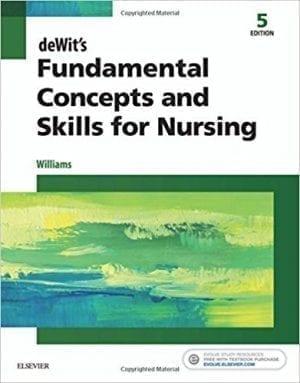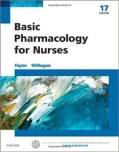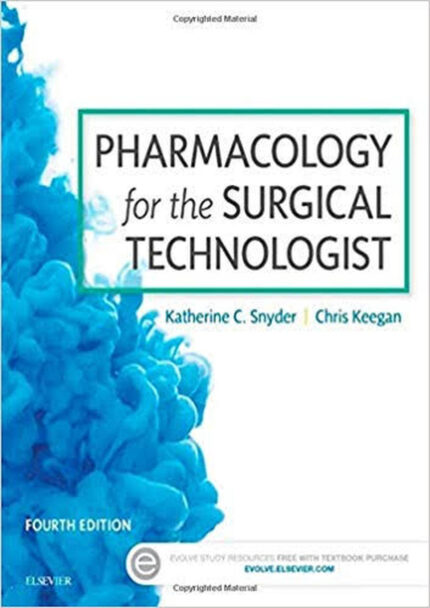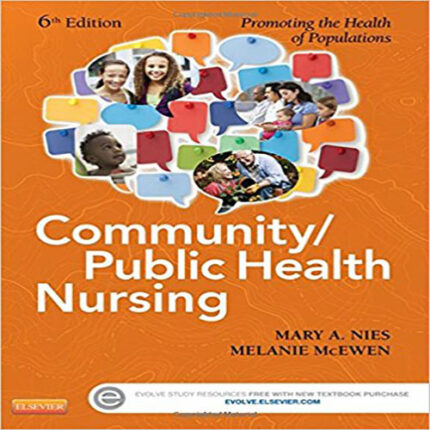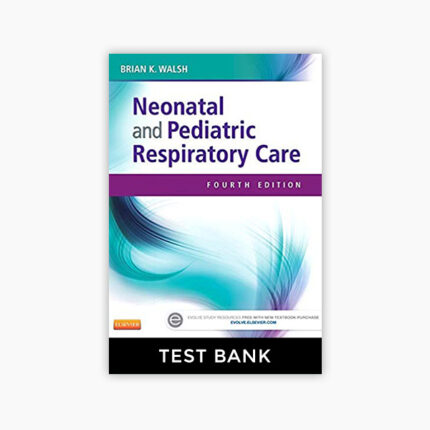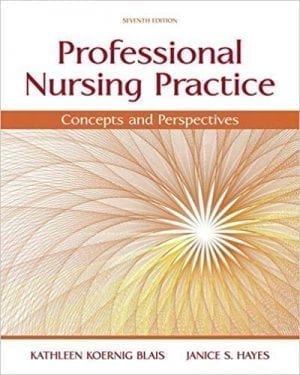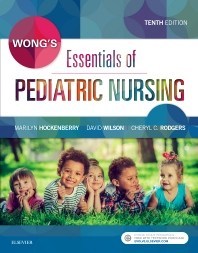Test Bank for deWits Fundamental Concepts and Skills for Nursing 5th Edition by Williams
Chapter 06: Implementation and Evaluation
MULTIPLE CHOICE
1. The nurse is aware that one of the time flexible tasks to be accomplished would be:
| a. | administering daily insulin 30 minutes before breakfast. |
| b. | taking the patient’s vital signs once a day. |
| c. | weighing the patient before breakfast. |
| d. | monitoring a critical patient’s vital signs every 15 minutes. |
ANS: B
Daily vital signs can be taken at any time during the day, whereas the other tasks mentioned have a time constraint.
DIF: Cognitive Level: Application REF: p. 73 OBJ: Theory #2
TOP: Care Delivery KEY: Nursing Process Step: Planning
MSC:NCLEX: Physiological Integrity: Basic Care and Comfort
2. Prior to the nurse implementing a nursing procedure for a patient, the nurse should initially:
| a. | question the rationale for the procedure. |
| b. | perform a physical assessment of the patient. |
| c. | check the agency manual for the procedure. |
| d. | mentally review the procedure. |
ANS: D
Reviewing the procedure, checking the manual if uncertain, confirming the order for the procedure, assessing that there is no interference with the completion of the procedure, and identifying the patient are standard steps in deliberative nursing action.
DIF:Cognitive Level: ApplicationREF:p. 76|Box 6-2
OBJ: Theory #1TOP: Care Delivery
KEY: Nursing Process Step: Planning
MSC:NCLEX: Physiological Integrity: Basic Care and Comfort
3. At the 7:00 AM handoff report, the nurse receives the report that patient A had a sleepless night related to pain and just fell asleep after an increased pain medication administration 1/2 hour ago. Patient B, who is scheduled for surgery at 8:30 AM, is also sleeping. How would an organized nurse plan the early morning activities?
| a. | Wake patient A for breakfast. |
| b. | Perform time flexible tasks that can be done while both patients sleep. |
| c. | Prepare patient B now; allow patient A to sleep. |
| d. | Assign a nursing assistant to wake and help feed patient A. |
ANS: C
Setting priorities and identifying time fixed tasks would indicate that patient B needs to be prepared for surgery. Patient A needs to sleep.
DIF: Cognitive Level: Analysis REF: p. 73 OBJ: Theory #1
TOP: Care Delivery KEY: Nursing Process Step: Implementation
MSC:NCLEX: Physiological Integrity: Basic Care and Comfort
4. Preparing a patient for a diagnostic test, and telling the patient what to expect during and after the test, is considered:
| a. | an independent nursing action. |
| b. | the doctor’s responsibility. |
| c. | a dependent nursing action that requires the doctor’s authorization. |
| d. | an interdependent nursing action. |
ANS: A
Patient education is an independent nursing action.
DIF: Cognitive Level: Comprehension REF: p. 74 OBJ: Theory #2
TOP: Patient Education KEY: Nursing Process Step: Implementation
MSC:NCLEX: Physiological Integrity: Basic Care and Comfort
5.The nurse explains that a multidisciplinary step-by-step approach to patient care is:
| a. | documented in the nursing care plan in the patient’s medical record. |
| b. | not used often since managed care became part of health care. |
| c. | referred to as a clinical pathway and is used instead of a nursing care plan. |
| d. | more expensive than the traditional separation of health care services. |
ANS: C
An outgrowth of managed care has been collaborative models of care called clinical pathways.
DIF: Cognitive Level: Knowledge REF: p. 74 OBJ: Theory #1
TOP: Clinical Pathways KEY: Nursing Process Step: Implementation
MSC:NCLEX: Safe, Effective Care Environment: Coordinated Care
6.The nurse documents interventions periodically during the shift in nurses’ notes primarily to:
| a. | validate the number of nonlicensed personnel who interact with the patient. |
| b. | indicate that the nursing care plan has been implemented. |
| c. | briefly summarize activities during the shift. |
| d. | confirm that the nursing diagnoses in the care plan are appropriate. |
ANS: B
The nursing care must be documented in the nurses’ notes to prove that interventions were implemented. In some facilities documentation is required at least every 2 hours.
DIF: Cognitive Level: Comprehension REF: p. 76 OBJ: Theory #3
TOP: Documentation KEY: Nursing Process Step: Implementation
MSC:NCLEX: Safe, Effective Care Environment: Coordinated Care
7.The nurse compares actual nursing outcomes to the expected nursing outcomes in order to:
| a. | prepare the patient to be discharged from the facility. |
| b. | determine if the patient’s health problems have been treated. |
| c. | calculate charges for nursing services during the patient’s hospital stay. |
| d. | determine if progress is made or to determine if revisions are needed. |
ANS: D
Evaluation of patient responses to treatment and progress toward goals is performed continuously so that the nursing care plan may be modified if needed.
DIF: Cognitive Level: Comprehension REF: p. 77 OBJ: Theory #5
TOP:OutcomesKEY:Nursing Process Step: Evaluation
MSC:NCLEX: Physiological Integrity: Basic Care and Comfort
8.The general rule is that the initial care plan for a patient is:
| a. | developed by an RN in an acute care setting. |
| b. | used as the basis of care throughout a hospital stay without alteration. |
| c. | completed on the day of admission. |
| d. | developed by the primary care provider and incorporated into the nursing care. |
ANS: A
An RN is responsible for developing the plan of care for patients in acute care settings. An LPN may begin the care plan in a skilled nursing facility and will collaborate with the RN for revision. The nursing care plan will be revised frequently as the patient’s condition changes.
DIF: Cognitive Level: Comprehension REF: p. 79 OBJ: Theory #2
TOP: Care Planning KEY: Nursing Process Step: Planning
MSC:NCLEX: Safe, Effective Care Environment: Coordinated Care
9.The nurse is aware that the nursing audit is a valuable process used to:
| a. | determine whether a particular patient received the care indicated in the nursing care plan. |
| b. | evaluate whether nursing care for a group of patients meets the standards of care in that facility. |
| c. | determine the cost of nursing care in the hospital in order to set rates for daily care. |
| d. | identify careless or negligent nursing care to protect the facility from lawsuits. |
ANS: B
Nursing audits are performed to improve nursing practice by checking a group of patient records for how well particular standards were met and standards of care were being used.
DIF: Cognitive Level: Knowledge REF: p. 79 OBJ: Theory #6
TOP: Nursing Audits KEY: Nursing Process Step: Planning
MSC:NCLEX: Safe, Effective Care Environment: Coordinated Care
10.The nurse evaluates that the patient has met the outcome of feeding himself independently. The nurse should:
| a. | inactivate the nursing diagnosis from the care plan. |
| b. | notify the primary care provider that the patient can now feed himself. |
| c. | document the ability to self-feed and mark the nursing diagnosis as resolved. |
| d. | inform the RN to document the self-feeding and to cancel the nursing diagnosis. |
ANS: C
The LPN should document the meeting of the outcome and mark the nursing diagnosis as “resolved.”
DIF: Cognitive Level: Application REF: p. 77 OBJ: Theory #6
TOP: Nursing Care Plan Revision KEY: Nursing Process Step: Intervention
MSC:NCLEX: Safe, Effective Care Environment: Coordinated Care
11.An example of an appropriately worded nursing goal or outcome for the nursing diagnosis of “Risk for falls related to weakness” would be:
| a. | nurse will assist the patient to the bathroom every 2 hours. |
| b. | patient will be free of injury from falls. |
| c. | patient will call for assistance when ambulating for the next week. |
| d. | nurse will keep room well lit 24 hours a day. |
ANS: C
An appropriately worded outcome is a patient centered, measurable, and time defined goal based on a nursing diagnosis.
DIF:Cognitive Level: ApplicationREF:p. 79|Box 6-3
OBJ:Theory #5TOP:Expected Outcomes
KEY:Nursing Process Step: Evaluation
MSC:NCLEX: Physiological Integrity: Basic Care and Comfort
12.Nurses design interventions that are appropriate for a patient that are:
| a. | based on the primary care provider’s orders and the medical diagnosis. |
| b. | expected to help the patient meets the goals most quickly. |
| c. | used to evaluate whether the nursing care plan should be revised. |
| d. | based on cost effectiveness and staff availability. |
ANS: B
Nursing interventions are based on nursing diagnoses and are those most likely to assist the patient in meeting outcomes related to those diagnoses.
DIF:Cognitive Level: ComprehensionREF:p. 79|Box 6-3
OBJ:Theory #2TOP:Care Delivery
KEY:Nursing Process Step: Planning
MSC:NCLEX: Safe, Effective Care Environment: Coordinated Care
13.Before performing a catheterization, the inexperienced nurse should:
| a. | close the door or curtains to provide the patient with privacy. |
| b. | provide necessary education and explanation of the procedure to the patient. |
| c. | observe rules of Standard Precautions to protect herself from exposure to blood or body fluids. |
| d. | review the agency’s procedure manual for the accepted way of performing the procedure. |
ANS: D
Reviewing the procedure manual should occur before the inexperienced nurse explains to the patient, provides privacy, or observes Standard Precautions.
DIF: Cognitive Level: Application REF: p. 75 OBJ: Clinical Practice #2
TOP:Standards for All Nursing Procedures
KEY:Nursing Process Step: Implementation
MSC:NCLEX: Physiological Integrity: Basic Care and Comfort
14.During morning care in a skilled nursing facility, the student nurse notices that the patient who is at risk for impaired skin integrity has developed a small open area on his sacrum. To best address this situation, the student would first:
| a. | position the patient to lie on his side, document it, and inform the head nurse. |
| b. | position the patient on his side and encourage him to massage around the area. |
| c. | report to the primary care provider so that the nursing care plan can be revised. |
| d. | tell the nursing assistant to change the patient’s position every 2 hours. |
ANS: A
This change in the patient’s position with documentation is the initial intervention. The discovery of an open lesion requires a change in the nursing plan.
DIF: Cognitive Level: Analysis REF: p. 77 OBJ: Theory #2
TOP: Care Delivery KEY: Nursing Process Step: Implementation
MSC:NCLEX: Physiological Integrity: Basic Care and Comfort
15.A review of a patient’s nursing care plan before beginning care allows the nurse to:
| a. | make revisions in the plan as indicated by the shift report. |
| b. | use critical thinking skills to organize care for the patient. |
| c. | begin nursing interventions without needing an initial assessment. |
| d. | skip the shift report and begin with the initial assessment. |
ANS: B
Reviewing the patient’s care plan gives the nurse a starting point for organizing care.
DIF: Cognitive Level: Comprehension REF: p. 75 OBJ: Theory #2
TOP:PlanningKEY:Nursing Process Step: Planning
MSC:NCLEX: Physiological Integrity: Basic Care and Comfort
16.The nurse giving a patient a back massage is performing an intervention considered to be:
| a. | a dependent nursing action. |
| b. | an independent nursing action. |
| c. | an interdependent nursing action. |
| d. | a semi-dependent nursing action. |
ANS: B
An independent nursing action does not require a primary care provider’s order, but it does require critical thinking and nursing judgment. Giving a back massage would be an independent nursing action.
DIF: Cognitive Level: Comprehension REF: p. 74 OBJ: Theory #2
TOP: Care Delivery KEY: Nursing Process Step: Implementation
MSC:NCLEX: Physiological Integrity: Basic Care and Comfort
17.The nurse administering a medication to a patient is performing an intervention that is:
| a. | an independent nursing action. |
| b. | an interdependent nursing action. |
| c. | a semi-dependent nursing action. |
| d. | a dependent nursing action. |
ANS: D
The administration of a medication is a dependent nursing action because giving medication requires a primary care provider’s order.
DIF: Cognitive Level: Comprehension REF: p. 74 OBJ: Theory #2
TOP: Care Delivery KEY: Nursing Process Step: Implementation
MSC:NCLEX: Physiological Integrity: Basic Care and Comfort
18.The nurse caring for a group of patients would show cultural sensitivity to assign an older male nursing assistant to the care of:
| a. | a 45-year-old white male patient with uncontrolled diabetes. |
| b. | a 50-year-old Hispanic man with a broken leg. |
| c. | a 55-year-old Japanese man with irritable bowel syndrome. |
| d. | a 60-year-old Muslim woman with pneumonia. |
ANS: C
Older Japanese men may resist care given by a younger person or a female.
DIF: Cognitive Level: Analysis REF: p. 75 OBJ: Theory #1
TOP: Cultural Considerations KEY: Nursing Process Step: Planning
MSC: NCLEX: Psychosocial Integrity: Coping and Adaptation
19.In assigning tasks to the nursing assistant, the nurse could appropriately select:
| a. | range of motion exercises to lower limbs. |
| b. | sterile dressing change on a leg wound. |
| c. | postoperative education to a post-hysterectomy patient. |
| d. | witnessing of the signature on an operative permit. |
ANS: A
Range of motion exercises may be provided by nursing assistants, physical therapy aides, or restorative aides. The nurse performs any invasive procedure, legal document witnessing, and any sterile procedure.
DIF: Cognitive Level: Application REF: p. 75 OBJ: Theory #3
TOP:DelegationKEY:Nursing Process Step: Planning
MSC:NCLEX: Physiological Integrity: Basic Care and Comfort
20.The nurse is assessing a patient who just returned from a bowel resection 1 hour ago. The nurse notes a dressing over the suture line that is wet with sero sanguineous drainage. The nurse should initially:
| a. | perform a sterile dressing change. |
| b. | document and report the wet dressing to the charge nurse. |
| c. | reinforce the wet dressing and document. |
| d. | place a towel on the bed and turn the patient to the operated side. |
ANS: C
The general rule is that the initial dressing change is performed by the surgeon who will give further orders pertinent to future dressing changes. The dressing should be reinforced with sterile materials; findings should be documented and reported to the charge nurse.
DIF: Cognitive Level: Analysis REF: p. 74 OBJ: Theory #3
TOP: Initial Dressing Change KEY: Nursing Process Step: Implementation
MSC:NCLEX: Physiological Integrity: Basic Care and Comfort
MULTIPLE RESPONSE
1.The nurse coming on duty has received a report that an IV of 1000 mL of 5% glucose in 0.9% normal saline is running at a rate of 50 mL an hour to be followed by another 1000 mL to be run at the same rate. The reporting nurse states that the second IV should be hung at 9:00 AM. The prudent nurse should: (Select all that apply.)
| a. | hang the next 1000 mL when the first is finished. |
| b. | check to label on the present IV. |
| c. | confirm the flow rate. |
| d. | check the order for the IVs. |
| e. | speed up the flow so that the IV will be completed by 9:00 AM. |
ANS: B, C, D
The nurse should check the order and the flow rate, and the amount and type of fluid to follow for accuracy, and not depend on the handoff report.
DIF: Cognitive Level: Analysis REF: p. 73 OBJ: Theory #2
TOP: Care Delivery KEY: Nursing Process Step: Implementation
MSC:NCLEX: Physiological Integrity: Basic Care and Comfort
2.The purpose of the evaluation step of the nursing process is to: (Select all that apply.)
| a. | determine if outcomes have been reached and the goals are met. |
| b. | compare actual outcomes with expected outcomes. |
| c. | identify inefficient care given by assigned staff. |
| d. | confirm that nursing interventions are effective. |
| e. | ensure that the facility has not put itself at risk for litigation. |
ANS: A, B, D
Evaluation attempts to determine if the outcomes have been reached and that the interventions being used are effective. Evaluation also demonstrates if the actual outcomes agree with the expected outcomes in the nursing care plan.
DIF: Cognitive Level: Comprehension REF: p. 77 OBJ: Theory #5
TOP: Nursing Process KEY: Nursing Process Step: Evaluation
MSC:NCLEX: Physiological Integrity: Basic Care and Comfort
3.Standards of care are set by: (Select all that apply.)
| a. | the state’s nurse practice act. |
| b. | professional medical association standards. |
| c. | the facility’s policies and procedures. |
| d. | the primary care provider in charge of the patient’s treatment. |
| e. | the director of nurses and the agency administrator. |
ANS: A, B, C
Standards of care are set by the state’s nursing practice act, professional association standards, and the facility’s policies and procedures.
DIF: Cognitive Level: Comprehension REF: p. 75 OBJ: Theory #3
TOP: Standards of Care KEY: Nursing Process Step: Planning
MSC:NCLEX: N/A

